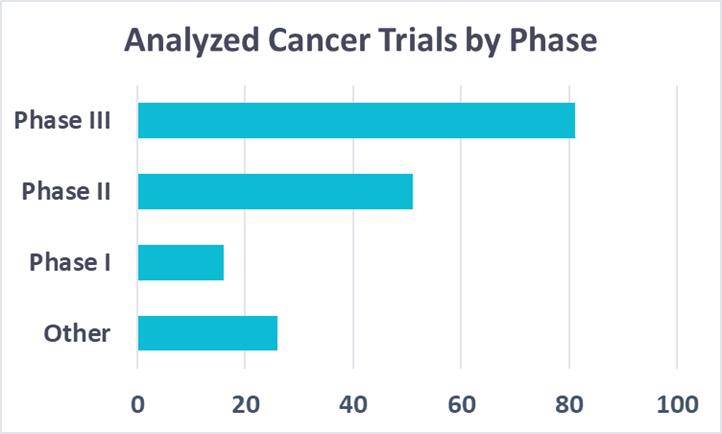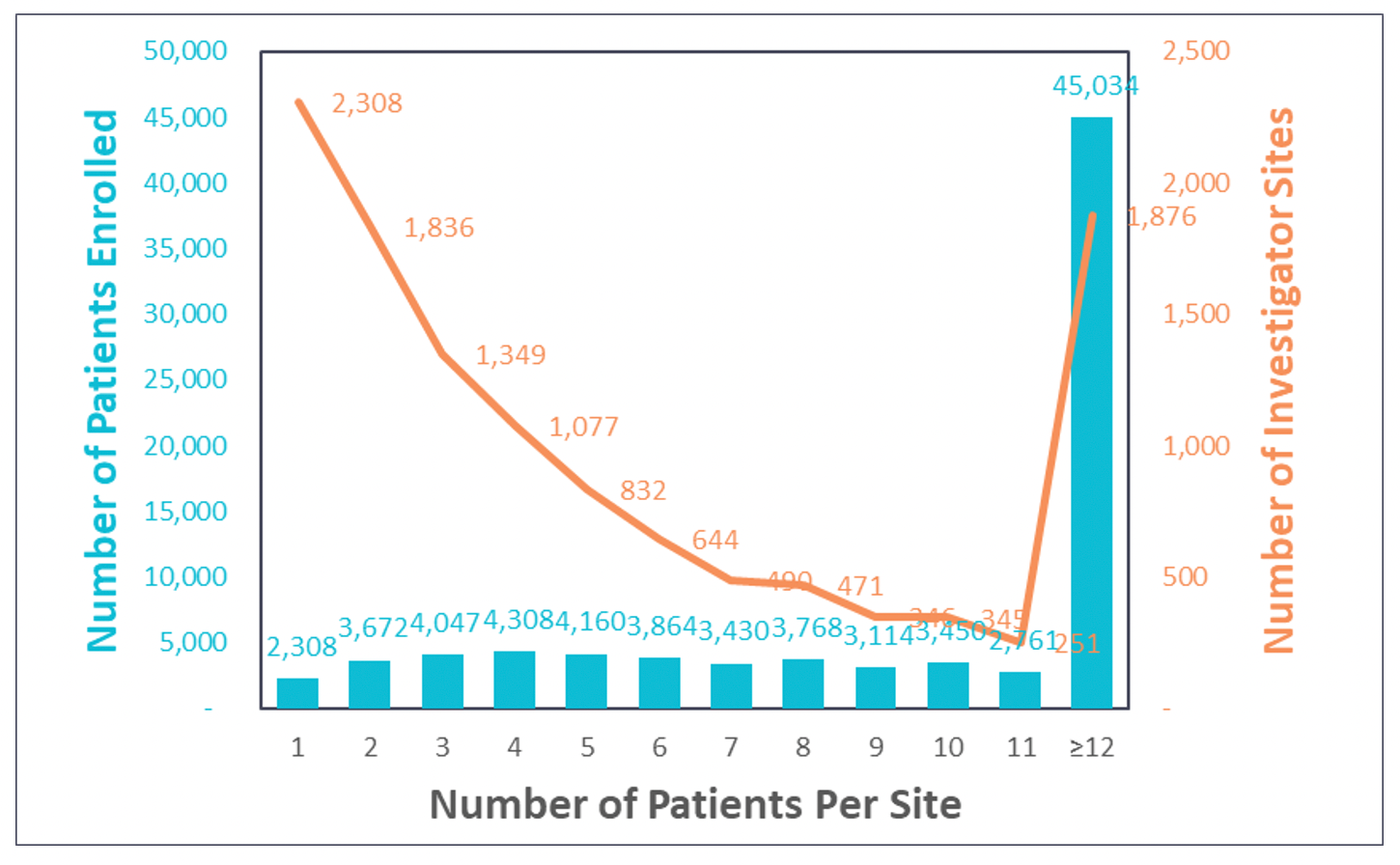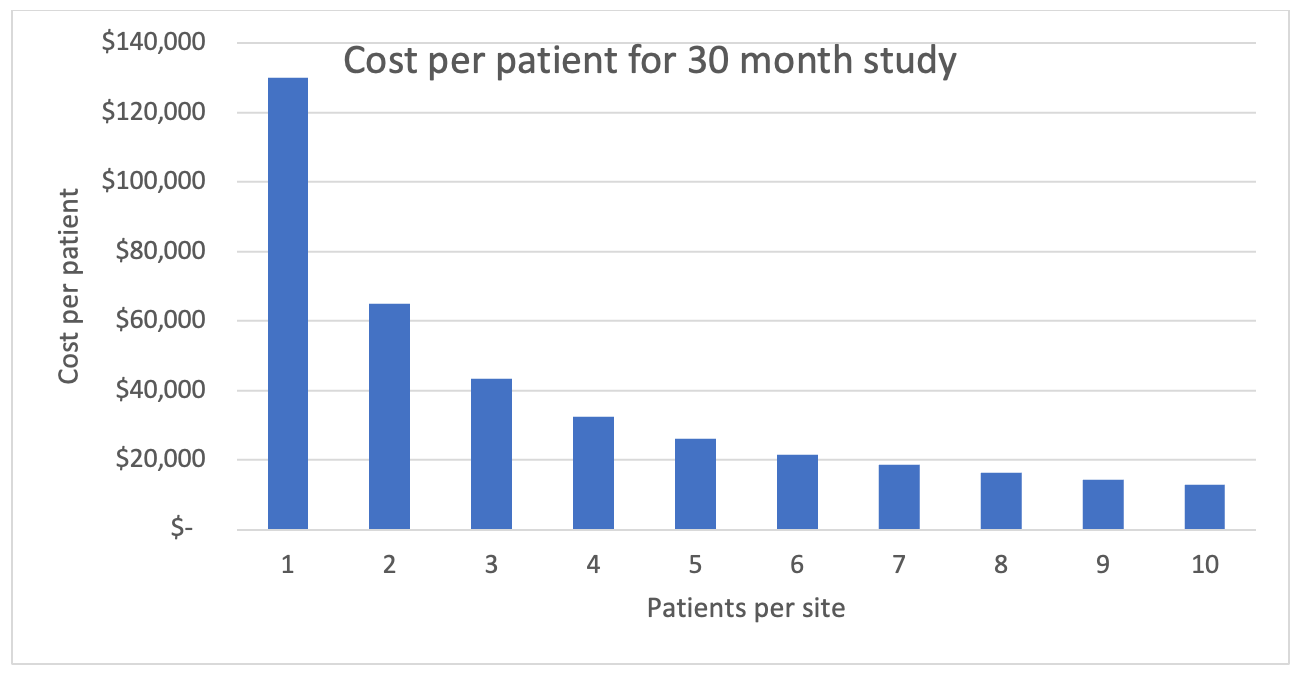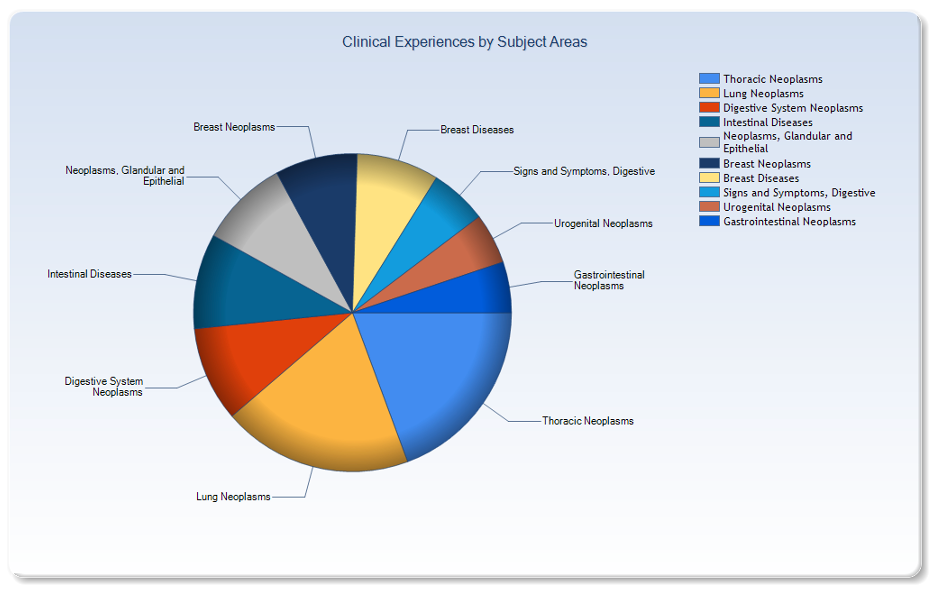Phesi Report: Assessing Single Patient Investigator Sites in Cancer Clinical Trials
Already existing enrollment challenges emphasized by single patient sites.

Patient enrollment performance is a chronic challenge in clinical development. Three years of the COVID-19 pandemic has caused a number of investigators to back out from participating in clinical trials, and the war in Ukraine has reduced geographic coverage for trials in various indications. Moreover, a global economic downturn and intensifying global inflation have made already costly clinical trials more expensive.
In this report, we leverage site level patient enrollment data in Phesi’s Trial Accelerator platform to assess the number of investigator sites that have recruited only one patient, the impact from those sites, and possible methods to improve enrollment.
The dataset
A total of 173 cancer clinical trials with site level enrollment data, the majority conducted in the past three years, are included in this analysis. Most of the trials severely impacted by COVID-19 are not included. Overall, cancer trials take at least three years to complete and publish results; the cancer trials started before or during the pandemic and affected by the shutdown do not yet have available enrollment data. In the dataset, there are 11,826 investigator sites that enrolled one or more patients, totaling 83,916 patients.
117 companies and organizations sponsored these trials. The top sponsors of these cancer trials are Hoffmann-La Roche, Novartis, Regeneron, Merck Sharp & Dohme Corp., and Pfizer.
These investigator sites are distributed across 57 countries globally. The top countries include the United States, Germany, Japan, and the United Kingdom.
Most of these trials are Phase III (81) and Phase II (51) trials. 169 of the 173 trials have 10 or more enrolling investigator sites.

Single patient investigator sites
Of the 11,826 investigator sites identified in the data, 2,298 enrolled only a single patient. By definition, these sites enrolled a total of 2,298 patients.
In other words, a total of 19% investigator sites (2,298/11,825) contributed less than 3% of the enrolled patients (2,298/83,916). In contrast, the top 16% of investigator sites contributed 54% of the enrolled patients.
This correlates with research conducted by the Tufts Center for the Study of Drug Development (Tufts CSDD) which found that 11% of sites fail to enroll a single patient and 37% under-enroll.

Based on a $40,000 site activation cost and $3,000 per month to manage a site, a study running for 30 months with just one patient will cost $130,000. In contrast, the best performing sites operate at approximately $14,000 per patient for similar study durations—just over 10% of the cost per patient at single patient sites.
Single patient sites prolong enrollment cycle time in two ways. A high percentage of single patient sites lowers the overall enrollment rate. It also requires more sites to complete enrollment. This complicates the operating space and dilutes resources from a focus on higher enrolling sites, which also contributes to a lower enrollment rate.
We cannot easily assess the impact of the data quality obtained from those single patient sites. It is safe to assume, though, that there are clear statistical liabilities when 50% to 70% of sites contribute just a single patient. For example, there are usually a set of subjective disease measures in cancer or other disease trials. A single patient at a site means there is no comparison to be made, which would increase the risk of measurement deviation. In addition, there is a steep learning curve for new sites and there are likely to be higher deviations with the first few patients until the site becomes familiar with the study.
Single patient sites are a significant factor in enrollment challenges, which also includes sites enrolling zero patients. The same dataset reveals that the number of activated but “zero patient recruited” sites amounted to 27% of those sites that recruited one or more patients.
The following chart shows a correlation between the percentage of non-enrolling sites and percentage of single patient sites. Each dot represents a cancer trial. The key takeaway is that when the overall quality of investigator sites selected for a cancer trial is not satisfactory, the proportion of both non-enrolling sites and sites enrolling only single patient is higher.

How to address the enrollment challenge
There are some positive elements to be found in the analysis. Despite the high percentage of single patient enrolling sites, the median enrollment is four patients per site. This means half of sites enrolled patients at an operational cost per patient equal to 25% of those that enrolled only a single patient, or less.

Across all the analyzed trials, the percentage of single patient sites ranges from 2% to 76%. Of the trials Phesi analyzed, 37 trials, or 21%, managed to reduce single patient sites to less than 10%.
Over the past 10 years, the industry has made a significant effort to improve investigator site enrollment performance. Yet, we don’t believe enough has been done to minimize the number of poorly performing sites.
Typically, current investigator site selection has focused on past clinical trial experience, which is far from sufficient. Clinical operations/study managers should ask:
- Are past experiences relevant to the current study?
- Are they aligned with the academic focus?
- What is an investigator site’s past enrollment performance?
- Can we predict an investigator’s future performance?
Case study: Examples of successful enrollment
Igor Bondarenko, MD, PhD, from Ukraine is one of the most prolific investigators among the 173 trials. He enrolled 113 patients for the 11 trials in which he participated. The median number of patients he enrolled is nine. There is no trial where he enrolled only a single patient.

While COVID-19 naturally impacted his level of involvement, the Ukraine war seems not to have stopped him from participating in clinical trials.

Bondarenko has broad coverage in various cancers but focuses mostly on solid tumors. From the type of candidates he has been involved in developing, we can deduce his familiarity with various biomarkers, which is increasingly important for precision medicine for cancer treatments.
*All results were sourced from Phesi’s Trial Accelerator platform.
Gen Li, PhD, MBA, President and Founder, Phesi
Author acknowledgements
Ken Getz, Executive Director and Professor, Tufts Center for the Study of Drug Development
Beth Harper, Chief Learning Officer, Pro-ficiency
What Can ClinOps Learn from Pre-Clinical?
August 10th 2021Dr. Hanne Bak, Senior Vice President of Preclinical Manufacturing and Process Development at Regeneron speaks about her role at the company as well as their work with monoclonal antibodies, the regulatory side of manufacturing, and more.